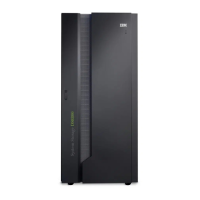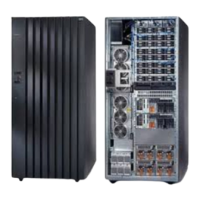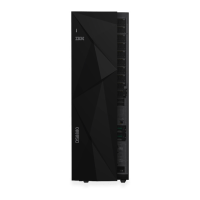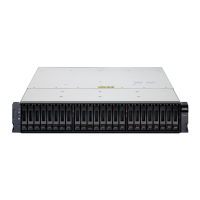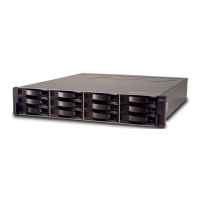used in the CKD architecture for managing the data and the storage devices are called channel command
words.
Fixed block
In xed block (FB) architecture, the data (the logical volumes) are mapped over xed-size blocks or
sectors.
With an FB architecture, the location of any block can be calculated to retrieve that block. This
architecture uses tracks and cylinders. A physical disk contains multiple blocks per track, and a cylinder is
the group of tracks that exists under the disk heads at one point in time without performing a seek
operation.
T10 DIF support
American National Standards Institute (ANSI) T10 Data Integrity Field (DIF) standard is supported on
IBM Z for SCSI end-to-end data protection on xed block (FB) LUN volumes. This support applies to the
IBM DS8900F unit (99x models). IBM Z support applies to FCP channels only.
IBM Z provides added end-to-end data protection between the operating system and the DS8900F unit.
This support adds protection information consisting of CRC (Cyclic Redundancy Checking), LBA (Logical
Block Address), and host application tags to each sector of FB data on a logical volume.
Data protection using the T10 Data Integrity Field (DIF) on FB volumes includes the following features:
• Ability to convert logical volume formats between standard and protected formats supported through
PPRC between standard and protected volumes
• Support for earlier versions of T10-protected volumes on the DS8900F with non T10 DIF-capable hosts
• Allows end-to-end checking at the application level of data stored on FB disks
• Additional metadata stored by the storage facility image (SFI) allows host adapter-level end-to-end
checking data to be stored on FB disks independently of whether the host uses the DIF format.
Notes:
• This feature requires changes in the I/O stack to take advantage of all the capabilities the protection
offers.
• T10 DIF volumes can be used by any type of Open host with the exception of iSeries, but active
protection is supported only for Linux on IBM Z or AIX on IBM Power Systems. The protection can only
be active if the host server has T10 DIF enabled.
• T10 DIF volumes can accept SCSI I/O of either T10 DIF or standard type, but if the FB volume type is
standard, then only standard SCSI I/O is accepted.
Logical volumes
A logical volume is the storage medium that is associated with a logical disk. It typically resides on two or
more hard disk drives.
For the storage unit, the logical volumes are dened at logical conguration time. For count-key-data
(CKD) servers, the logical volume size is dened by the device emulation mode and model. For xed block
(FB) hosts, you can dene each FB volume (LUN) with a minimum size of a single block (512 bytes) to a
maximum size of 2
32
blocks or 16 TB.
A logical device that has nonremovable media has one and only one associated logical volume. A logical
volume is composed of one or more extents. Each extent is associated with a contiguous range of
addressable data units on the logical volume.
Chapter 2. Hardware features
31
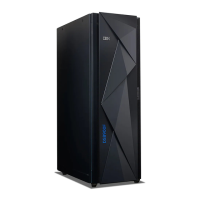
